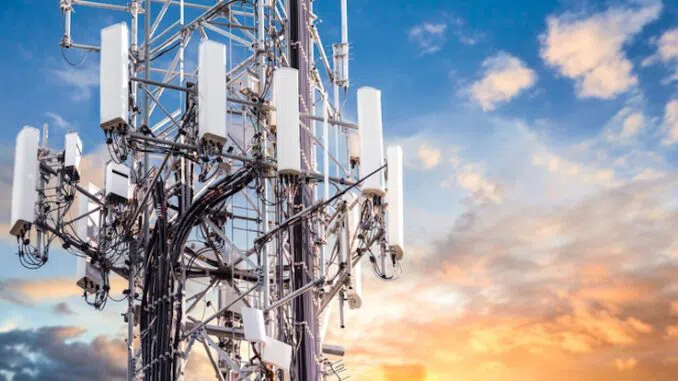-
Connecticut City BANS 5G Due to ‘Serious Health Risk to Humans’

A city in Connecticut has voted to ban the rollout of 5G due to the ‘serious health risk’ the technology poses to humans.
The Board of Representatives in Stamford, Connecticut, earlier this month voted to reject a model agreement that would have allowed AT&T and Verizon to install dangerous 5G equipment on city-owned utility poles.
In a bid to get 5G fast-tracked in his state, Gov. Ned Lamont’s office created a template contract between the nation’s top two telecommunication carriers and the state’s five major cities.
Infowars.com reports: Stamford, the state’s second-largest city, is the only city so far to have voted against using the contract. Twenty-one representatives voted against the pact. Five were in favor and eight abstained.
Commenting on the city’s decision, W. Scott McCollough, chief litigator for Children Health Defense’s (CHD) electromagnetic radiation (EMR) cases, told The Defender, “I applaud Stamford’s principled stand.”
Advocates for the contract said Stamford’s rejection might bring a lawsuit against the city, but McCollough disagreed.
“The wireless companies do not have a case yet. It is too early,” he said. “This was merely a decision to reject a model agreement. Federal and state law allow the city to instead negotiate individual terms, and that is what Stamford has chosen to do.”
The 21 representatives were largely persuaded by presentations by six independent experts on the scientific evidence of harm from radiofrequency (RF) radiation, including 5G, according to a local media report.
The experts, including toxicologist and epidemiologist Devra Davis, Ph.D., MPH, said there were many documented health and environmental impacts of wireless radiation, including brain damage, memory loss, decline in reproductive function, DNA damage and harm to insects.
The board’s land use committee voted to recommend rejecting the pact after hearing from the experts.
Davis, founder and president of Environmental Health Trust (EHT), told The Defender, “Confronted with overwhelming, independent scientific information about the real and present dangers of bringing electromagnetic fields closer to humans than ever before, Stamford voted to protect people and their environment.”
She added, “We should stop debating whether we have proof of human harm, and take steps now to prevent that harm from spreading.”
‘The city has an obligation to protect citizens’
Some representatives, like City Rep. Don Mays, worried that rejecting the pact would mean AT&T and Verizon would sue the city. He said at the Oct. 18 meeting, “Until that technology [that emits wireless radiation] changes in the marketplace, we are essentially going to have to accept it.”
A 2018 ruling by the Federal Communications Commission (FCC) blocks states and municipalities from taking actions that would impede or delay the rollout of 5G technology.
Mays added, “If cities try to go against the FCC rules, the carriers will sue the cities … And I don’t think we want to subject this city to that.”
However, City Rep. James Grunberger disagreed, saying, “I don’t think we should back away from this because of the threat of a lawsuit … If we have to be a test case on this, we should be a test case.”
During a November meeting, Grunberger affirmed his position. “The federal government does not have guidelines for long-term exposure, so we need to protect our city ourselves, and not succumb to legal threats.”
Similarly, Rep. Sean Boeger said, “I’m just not willing to take a gamble with my four kids living in this city and my constituents’ children living in this city without some type of concrete consensus.”
Neil Sherman, a Stamford resident, said the contract would allow 5G equipment to go up “close to homes and schools without limitation to the number of antennas. They operate 24 hours a day, seven days a week, 365 days a year.”
“The city has an obligation to protect citizens from potentially dangerous modalities,” Sherman said.
Do cities and states have to accept the 5G rollout?
McCollough said challenges to the 2018 FCC ruling are still being worked out in the court system.
“Sometimes you have to stand your ground and here’s hoping Stamford does that. They do have some arguments and those need to be raised and evaluated by a court in Connecticut.”
McCollough pointed out that Stamford didn’t issue an “ordinance” or “even a regulation” that blocks telecom providers, so the telecom providers “would be fools to sue now claiming an effective prohibition.” He said:
“The board’s decision was simply to reject a model contract — or right-of-way agreement — that spelled out the terms of access that telecom companies could use for putting their 5G equipment on city infrastructure.
“All that it means is the city will now proceed to negotiate the terms and conditions for access, rather than using this model contract that the Governor’s office suggested cities use.
“The telecoms don’t have a cause of action until those negotiations break down or they submit a permit application that involves a site in right-of-way and it is denied.”
Four takeaways from experts’ presentation on wireless radiation risks
In addition to Davis, the experts who presented to the board’s land use committee included Dr. Rob Brown, an orthopedic radiology specialist, B. Blake Levitt, a science journalist, Theodora Scarato, EHT’s executive director, Kent Chamberlin, Ph.D., past chair and professor emeritus in the Electrical and Computer Engineering Department at the University of New Hampshire, and Joseph Sandri, a telecom regulatory attorney and CEO of the tech lab Thought Delivery Systems Inc.
Here are four key points they made to Stamford’s city representatives:
1. Wireless radiation can cause cellular stress and DNA damage leading to disease.
Scientific studies have repeatedly shown that exposure to RF radiation can cause individual cells in the body to become stressed, leading to DNA damage and disease, according to Brown.
“The longer a cell is stressed,” he said, “the greater the likelihood it may malfunction.”
Brown said:
“You might think that the term stress implies a manageable state and that it’s not a big deal, but let me clarify. Stress weakens the body’s tissues just as stress can cause a bridge to collapse, stress can cause a bone to fracture and also to develop or an organ system to fail.
“When cells undergo stress, unfortunate things can happen. Membranes — which protect the cell and control the cell’s internal environment — can become damaged, causing the cell to lose its ability to function and put[ting] the cell’s life at risk.”
Proteins in the stressed cell can become damaged, he said, adding that Alzheimer’s disease, Lewy body dementia and amyloidosis are all associated with protein denaturation.
“And importantly,” he said, “when the cell is stressed, its DNA can become damaged, which can lead to mutations and possibly cancer.”
Chamberlin, who served on a year-long Land-Use Commission tasked by the state of New Hampshire to investigate the health risks of wireless radiation, pointed this out as well.
Chamberlin said that prior to joining the commission he, a wireless engineer, did not believe that low-level radiation was particularly harmful. “That was the conventional — and is the conventional — wisdom for people working in my field. And it’s a viewpoint that’s routinely reinforced by [the telecom] industry.”
“However,” Chamberlin said, “my beliefs about the safety of wireless radiation soon changed” as the commission identified “hundreds of top-tier publications that showed harm from low-level wireless radiation exposure.”
He said:
“The primary mechanism by which exposure causes harm are oxidative changes, which can lead to an increase in free radicals. Those free radicals can lead to chronic inflammation and a host of adverse outcomes including:
- Neurodegenerative disease (Alzheimer’s)
- Cancer
- Diabetes
- Sperm damage.”
Brown also said that some have claimed 5G won’t have negative health impacts because it only penetrates a few millimeters into the skin — but “radiation doesn’t need to go deep to cause damage,” he said, adding:
“The thyroid gland is often only a few millimeters deep to the skin surface and so are the testicles. Interfering with the function of these glands can cause systemic endocrine dysfunction.
“In addition, many important cells including red blood cells and immune cells are just below the skin surface.”
2. FCC guidelines are a ‘complete failure’ for protecting kids.
Davis pointed out research showing children are especially vulnerable to RF radiation.
Children’s unique physiology, including smaller heads and more fluid in their brains, results in proportionately greater absorption of RF radiation than adults.
Research shows children can absorb up to 30 times more the amount of RF radiation in their hippocampus and 10 times more in the bone marrow of their skull.
The FCC has refused to take this research into consideration when setting its wireless radiation exposure guidelines, she said.
EHT and other organizations, including CHD, successfully sued the FCC by arguing that the agency’s guidelines — which have not been updated since 1996 — were inadequate to protect human health and did not take recent science into account. Davis said:
“The U.S. Court of Appeals, the District of Columbia, determined that we were correct and ruled that the FCC’s policies on standards for testing phones and other devices were arbitrary and capricious and that the testing procedures, particularly as they relate to children and long-term exposures, were a complete failure.
“The court found the FCC had failed to provide evidence of properly examining long-term exposure, children’s vulnerability, the testimony of people injured by radiation sickness and impacts to the developing brain and reproductive system.”
The FCC still has not complied with the court’s mandate to review recent science and give a better explanation for how its current standards are adequate for protecting health.
3. Other countries have more stringent wireless radiation standards.
Scarato said that while the FCC’s standards have yet to reflect current science, other countries have taken action to set lower wireless exposure limits.
India, China, Russia, Italy and Switzerland all have limits that are a mere fraction of the FCC’s exposure limit, she said.
“And in some of those countries, there are scientists that are studying this issue ongoing,” she said. “However, in the United States, we don’t have that.”
No U.S. regulatory agency with health expertise has reviewed the scientific evidence of biological effects from RF radiation, she said.
“Not the EPA [U.S. Environmental Protection Agency], not the CDC [Centers for Disease Control and Prevention], not the National Cancer Institute, the FDA [U.S. Food and Drug Administration or] the Department of Labor,” she added.
4. Pollinators may be impacted by 5G.
Levitt, who has researched the biological effects of RF radiation since the late 1970s, shared research on RF radiation’s negative impact on the environment and non-human species.
She said neither the FCC nor the state of Connecticut had ever conducted a NEPA (National Environmental Policy Act) review for 5G.
Under NEPA law, federal agencies must assess whether projects they have authorized will cause harm.
Meanwhile, research indicates that rolling out 5G may especially hurt insects as they are “very inefficient thermo regulators” and “particularly vulnerable to temperature changes,” Levitt said, adding that “What impacts insects impacts us all.”
Many frequencies of wireless radiation, including the ranges used by 5G, cause an organism’s tissues to heat up which, in turn, can impact the organism’s functioning.
Research shows that 5G may be lethal to honeybees, she said.
Levitt pointed out that this would impact the human food supply. She warned, “We are flirting with catastrophic impacts from insect deaths alone, capable of punching holes in the entire food web. [The] Human food supply is endangered.”
Watch the presentations to the land use committee here:




Login or Register to Leave a Comment